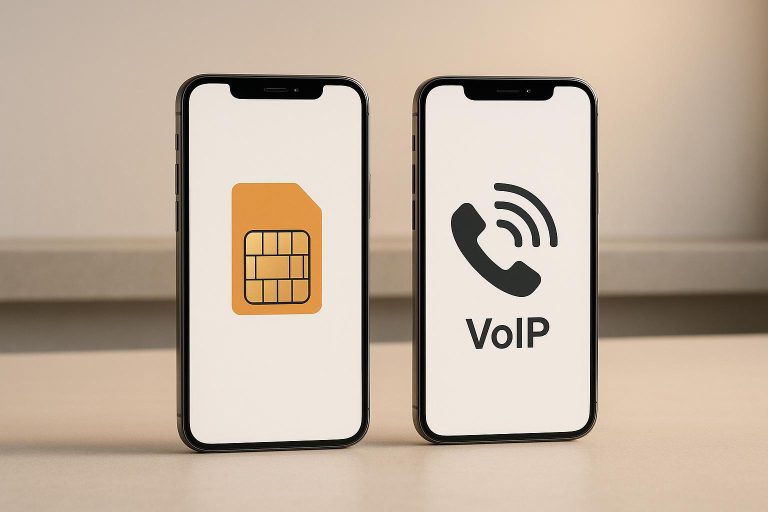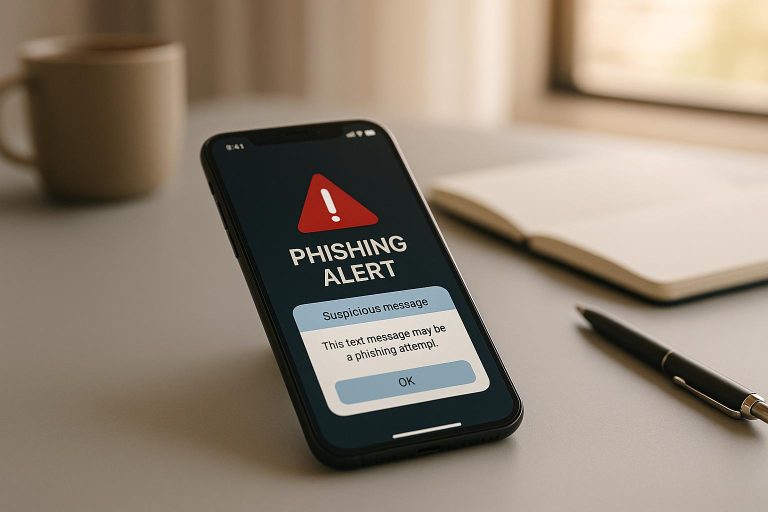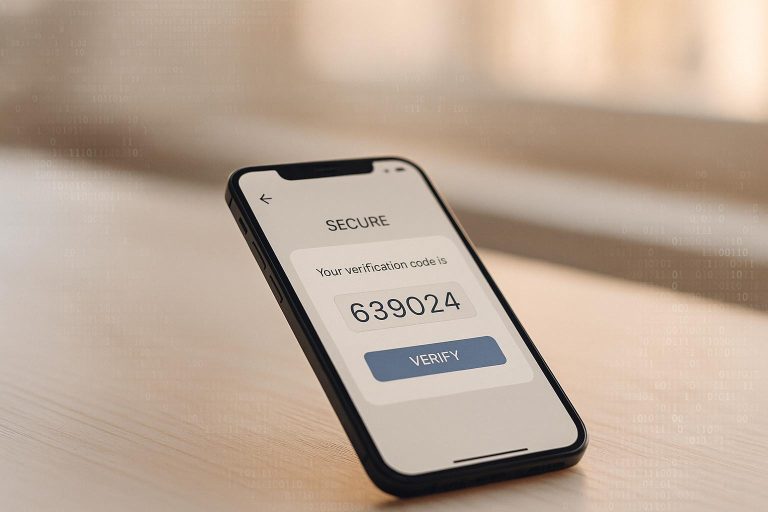Common SMS Delivery Issues and How to Solve Them
Key Problems:
- Carrier Filtering: Messages flagged as spam due to unverified numbers, bulk sending, or certain keywords.
- VoIP Number Issues: Often blocked for security reasons or unreliable due to internet dependency.
- Outdated Numbers: Invalid or recycled numbers lead to failed deliveries.
- Network/Device Problems: Carrier outages, weak connectivity, or full message storage can cause delays.
Quick Fixes:
- Use real-SIM numbers instead of VoIP for better reliability.
- Register for 10DLC to comply with carrier rules and avoid blocks.
- Keep contact lists updated to remove invalid numbers.
- Follow carrier guidelines: include opt-out options, avoid spammy content, and manage sending volume.
Best Practices:
- Monitor delivery rates (aim for 98%+), bounce rates, and opt-outs.
- Use real-time tools like webhooks for instant issue detection.
- Analyze carrier response codes to identify and fix problems.
Example Solution: Services like JoltSMS offer dedicated, carrier-grade SIM numbers ($50/month) to ensure 99.9% delivery reliability.
SMS Messaging(Texts) failed not delivered issues [Fixed]
Common SMS Delivery Problems
SMS delivery failures can throw a wrench in secure access and verification processes, often leading to frustrating lockouts or security hiccups. To tackle these issues effectively, it’s important to understand the key culprits – ranging from carrier filtering to VoIP limitations, user behavior, and network disruptions.
Carrier Blocks and Message Filtering
Mobile carriers use filtering systems to block spam, fraud, and abusive content. Unfortunately, these filters can also mistakenly block legitimate messages. Messages are flagged for reasons such as bulk sending patterns, the use of specific keywords, non-compliance with regulations, or sending from unverified numbers. In the U.S., the 10DLC (10-Digit Long Code) registration system has become essential for ensuring reliable SMS delivery. Numbers that aren’t registered face stricter filtering and reduced throughput [1].
To avoid automated blocks, proper sender registration and adherence to carrier guidelines are crucial. Some common triggers for carrier blocks include:
- Use of shortened URLs (e.g., bit.ly), which can be seen as security risks
- Sending high volumes of messages from unverified numbers
- Omitting opt-out instructions in messages
- Content that resembles known spam patterns
Sudden spikes in SMS volume without a gradual "warm-up" period can also lead to messages being flagged, even if they’re legitimate.
VoIP Number Problems
VoIP (Voice over Internet Protocol) numbers, while cost-effective and convenient, often face delivery challenges. Many platforms and websites block VoIP numbers for SMS verification due to security concerns [2]. Additionally, VoIP numbers depend entirely on a stable internet connection, making them unreliable for receiving SMS messages if connectivity falters.
On the other hand, traditional SIM-based numbers are generally more reliable. They don’t rely on an internet connection, are treated like standard mobile numbers, and have higher acceptance rates across platforms.
User Opt-Outs and Number Blocking
When users opt out of messages or block specific numbers, it can create a ripple effect, compounding delivery issues. Carriers may interpret these actions as signs of spam, leading to:
- Lower delivery rates for future messages
- Increased scrutiny from carrier filters
- Potential account restrictions or suspensions
- Higher costs from failed delivery attempts
High opt-out rates often point to poor list management or non-compliant messaging practices. Reconnecting with opted-out users requires strict adherence to regulations and carrier rules.
Invalid or Old Phone Numbers
Sending messages to disconnected, recycled, or misformatted numbers leads to hard bounces, which can drag down your overall delivery rate. A clean contact list is key to maintaining high delivery rates. Typically, a good SMS delivery rate falls between 95% and 98% [3]. Even a small number of invalid contacts can significantly impact your performance.
| Delivery Rate Range | Performance Level | Typical Issues |
|---|---|---|
| Above 90% | Excellent | Well-maintained lists, minimal filtering |
| 70% to 90% | Good | Some outdated contacts, minor carrier issues |
| 50% to 70% | Average | Data accuracy problems, spam filtering |
| 30% to 50% | Below Average | Invalid numbers, blocked messages |
| Below 30% | Poor | Compliance violations, outdated lists |
Regularly auditing and updating your contact database is essential, as numbers that were valid a few months ago might now be disconnected or reassigned.
Network and Device Problems
Network and device-related issues can also disrupt SMS delivery. Common network challenges include:
- Carrier outages in specific regions
- Network congestion during high-traffic periods
- Inter-carrier routing problems
- Failures in international gateways for cross-border messages
On the device side, issues like the following can interfere with message delivery:
- Phones that are turned off or have weak connectivity
- Full message storage, preventing new messages from being received
- SIM card malfunctions or connectivity problems
- Software bugs in messaging apps
While these problems are often temporary, they can cause significant delays – especially frustrating when verification codes expire within minutes.
How to Diagnose SMS Delivery Issues
Figuring out why SMS messages aren’t getting delivered starts with setting benchmarks and watching for any deviations. Combining real-time monitoring with historical trends is key to catching problems early.
Track Key Performance Metrics
The first step is to measure performance using actionable metrics. Your delivery rate is the main indicator of how well your SMS campaigns are working. If your delivery rate drops below 98%, it could point to issues like poor data quality or platform reliability [5].
Keep a close eye on your bounce rate, which can reveal problems like invalid or disconnected numbers. Hard bounces can hurt your sender reputation, while soft bounces often signal temporary network issues. Opt-out rates are another critical metric – unsubscribe rates above 1% may indicate problems with your content, message frequency, or compliance [7].
Click-through rates (CTR) are also worth monitoring. On average, SMS campaigns see a CTR of about 36% [7][8]. If your CTR is significantly lower, it might mean your messages aren’t reaching engaged users or that your content needs improvement.
"SMS marketing KPIs determine whether the direction chosen in the marketing strategy meets with a positive market reaction, whether the tools selected to achieve this goal are correct, and whether the messages are appropriate for customers." – SMSAPI [6]
Use Real-Time Monitoring Tools
Real-time dashboards are invaluable for spotting delivery issues as they happen. Many SMS platforms offer webhook integrations, which instantly push delivery reports to your monitoring tools.
For example, JoltSMS uses webhooks to send delivery updates directly to Slack or Discord. Their real-time dashboard and REST API provide instant visibility, helping your team address issues before they affect user experience.
Carrier response codes are another crucial tool. These codes explain why messages fail – whether it’s due to formatting errors, carrier violations, or technical glitches. If messages consistently show as "sent" but don’t reach recipients, it could point to carrier-level filtering.
Automated alerts can also be a game-changer. Set them up to notify your team whenever there are significant changes in key metrics, so you can investigate and resolve issues quickly.
Analyze User and Carrier Reports
Sometimes, metrics alone don’t tell the full story. User complaints and carrier feedback can highlight issues that might otherwise go unnoticed. A sudden drop in one-time password (OTP) conversion rates, for instance, can directly impact user experience and signal deeper problems.
"User feedback is a precise indicator of messaging health. When these metrics change significantly, particularly in one-time password (OTP) conversion rates and customer complaints, it’s crucial to investigate the underlying causes and understand their impact on user experience." [9]
When diagnosing delivery failures, dig into details like country and carrier data, message timing, status, and encoding patterns [9]. This can help you figure out whether the problem is limited to certain regions, carriers, or message types.
Carrier violation reports are another important resource. For example, in April 2025, Klaviyo highlighted how "Carrier Violation" or "Message Blocked" errors often mean you need to review your message content, links, or landing pages for anything referencing SHAFT (sex, hate, alcohol, firearms, tobacco) or CBD content [10]. If the failure reason is listed as "Unknown", a similar review process is recommended.
"Diagnosing SMS deliverability issues takes a mix of data analysis, technical awareness, and customer feedback. Once you’ve identified the problem areas, you’ll be in a much better position to take action and improve your overall SMS performance." [4]
When reporting issues to support teams, document everything thoroughly. Include details like affected countries, the scope of the problem, example message IDs, phone numbers, specific dates and times, and any relevant feedback data [9]. This kind of detailed reporting speeds up the resolution process and helps pinpoint the root cause.
These steps lay the foundation for resolving SMS delivery issues effectively in the next phase.
sbb-itb-070b8f8
How to Fix SMS Delivery Problems
Ensuring reliable SMS delivery requires a mix of strong infrastructure and consistent operational practices. Below are practical steps to address delivery issues and improve performance.
Switch to Real-SIM, Non-VoIP Numbers
The backbone of dependable SMS delivery lies in using real-SIM, non-VoIP numbers. Unlike VoIP numbers, which are often flagged by carriers due to their association with spam, real-SIM numbers are seen as legitimate and trustworthy.
Take JoltSMS as an example. They provide dedicated U.S. numbers equipped with carrier-grade SIM hardware, ensuring 99.9% reliability across over 1,000 platforms. For $50 per month, you get a dedicated number for at least 30 days, allowing unlimited inbound SMS. Unlike shared or recycled numbers, these dedicated numbers remain exclusive to you during your rental period. This exclusivity minimizes the risk of carrier blocks and ensures consistent delivery.
Follow Carrier Rules and Guidelines
Compliance with carrier rules is essential to maintain high delivery rates. Carriers actively filter messages to protect users from spam and fraud, and any violations can lead to immediate blocking.
- Obtain Consent: Always secure explicit permission before sending messages, and document this consent.
- Include Opt-Out Options: Add clear instructions like "Reply STOP to opt out" in every message, and handle opt-out requests promptly.
- Identify Yourself: Clearly state your organization’s name in each message to build trust.
- Avoid Prohibited Content: Stay away from topics like sex, hate, alcohol, firearms, or tobacco unless age-gated, and avoid spam triggers like excessive capitalization or aggressive language.
- Timing Matters: Send messages during business hours (8:00 AM–9:00 PM local time).
- Use A2P Messaging: If you’re sending application-to-person (A2P) messages, register for 10DLC. This registration helps reduce filtering and allows for higher throughput.
Gradually increasing your sending volume can also help establish a positive reputation with carriers, avoiding issues caused by sending too many identical messages in a short time.
Keep Contact Lists Clean and Updated
Outdated or invalid phone numbers can lead to delivery failures and damage your sender reputation. Keeping your contact lists up-to-date is crucial.
- Regularly validate and update your lists to remove invalid, disconnected, or unsubscribed numbers.
- Segment your audience based on engagement levels. Recipients who haven’t interacted with your messages in months are more likely to mark them as spam.
- Use automated tools to verify phone numbers in real time and flag problematic entries.
- Maintain clear records of opt-out requests and ensure explicit consent is obtained before adding new contacts.
Write Better Message Content
The content of your messages plays a significant role in delivery success. Carriers use advanced filters to analyze message content, links, and patterns for signs of spam.
- Use branded URL shorteners to make links look professional and trustworthy.
- Personalize messages to connect with recipients and improve engagement.
- Vary your message patterns and spread high-volume sends across multiple numbers to avoid triggering carrier filters.
By refining your message content, you can complement technical solutions and achieve better delivery outcomes.
Use Systematic Problem-Solving Methods
If delivery issues persist, a systematic approach can help identify and fix the root cause.
- Analyze delivery reports and carrier response codes to pinpoint specific problems.
- Test small message batches across different carriers and log details like regions, message IDs, and dates for troubleshooting.
- Implement automated monitoring tools to detect changes in delivery rates, bounce rates, or opt-out rates early.
Combining a reliable messaging setup, strict compliance, and proactive monitoring creates a strong foundation for consistent SMS delivery.
Conclusion: Steps to Reliable SMS Delivery
Ensuring reliable SMS delivery hinges on having the right infrastructure and maintaining consistent operations. It starts with using trusted real-SIM, non-VoIP numbers, adhering to carrier compliance rules, and implementing proactive performance monitoring.
For example, services like JoltSMS offer dedicated U.S. numbers backed by carrier-grade SIM hardware for $50/month. They provide 99.9% reliability across over 1,000 platforms, addressing common issues like delivery failures caused by carrier blocks on VoIP numbers. Pairing this with real-time monitoring helps you catch potential problems early, keeping your campaigns on track.
A robust system combining reliable technology and ongoing monitoring strengthens your messaging efforts. While real-SIM technology reduces many delivery issues, monitoring tools ensure you can quickly address any unexpected hiccups, keeping your campaigns effective and compliant.
Achieving success in SMS delivery isn’t about relying on a single solution. It’s about building a system that aligns with technical, operational, and compliance needs. By following carrier guidelines, maintaining clean contact lists, crafting thoughtful message content, and using dependable infrastructure, you can consistently achieve high delivery rates that drive SMS marketing success.
Regularly refining your strategy based on performance data ensures you stay ahead of changing carrier requirements and user expectations.
FAQs
How can I stop my SMS messages from being flagged as spam by carriers?
To ensure your SMS messages aren’t flagged as spam by carriers, make sure you have clear consent from recipients before hitting send. Always use a registered sender ID and steer clear of spammy tactics like excessive use of all caps, overloading special characters, or sharing links that aren’t branded.
Keep your messages professional and on-point by mixing up your content, incorporating branded URLs, and focusing on smaller, well-targeted recipient groups. Sticking to carrier rules and maintaining a strong sender reputation are key to achieving better delivery rates. Plus, using reliable platforms like JoltSMS can make a big difference by offering dedicated, non-VoIP numbers that deliver messages effectively.
Why are real-SIM numbers better than VoIP numbers for SMS delivery?
Real-SIM numbers stand out as a trusted option for SMS delivery because they are linked to physical SIM cards. This connection makes them more dependable and widely accepted by carriers and online platforms. On the other hand, VoIP numbers often raise red flags for being less secure, which can result in more delivery failures or even blocks.
Choosing real-SIM numbers means you benefit from higher delivery success rates, fewer interruptions, and smoother compatibility with platforms that rely on SMS verification.
How can I monitor and troubleshoot SMS delivery issues in real-time?
To keep tabs on SMS delivery and address issues as they arise, make use of tools that offer comprehensive delivery reports and error codes. These tools allow you to monitor delivery rates, spot invalid phone numbers, and catch network errors without delay.
Testing and validating message routes in real time is crucial for catching problems as they occur. Whether it’s carrier blocks or formatting errors, diagnosing these issues on the spot helps you fix them quickly and maintain dependable SMS delivery.







